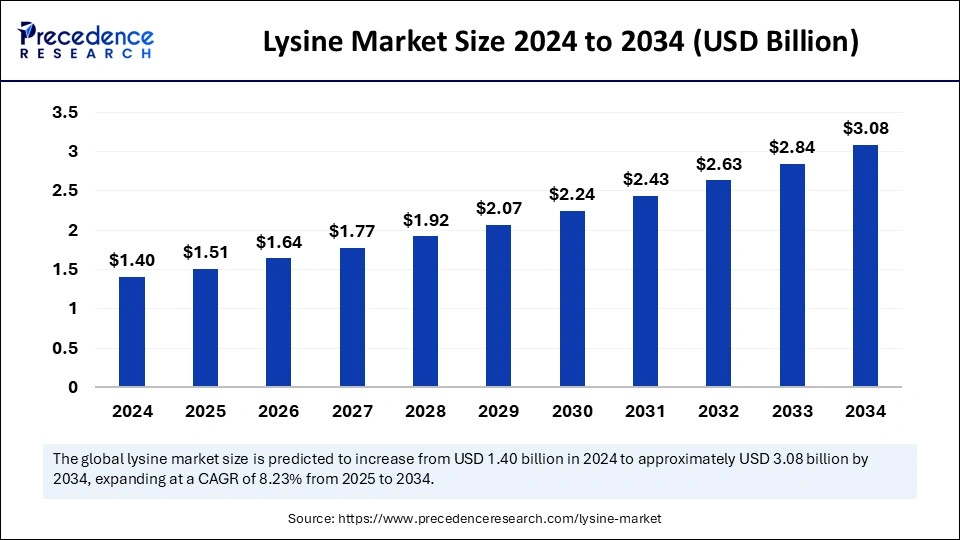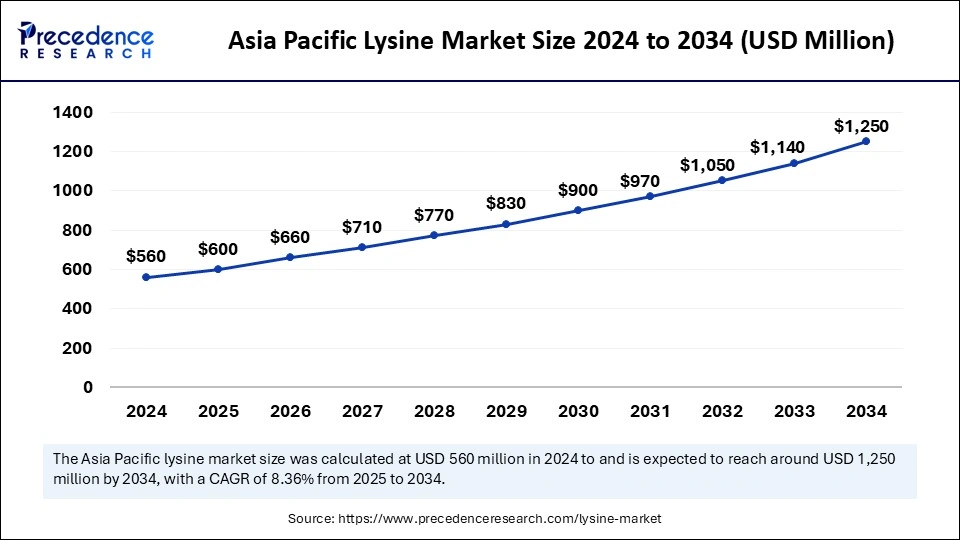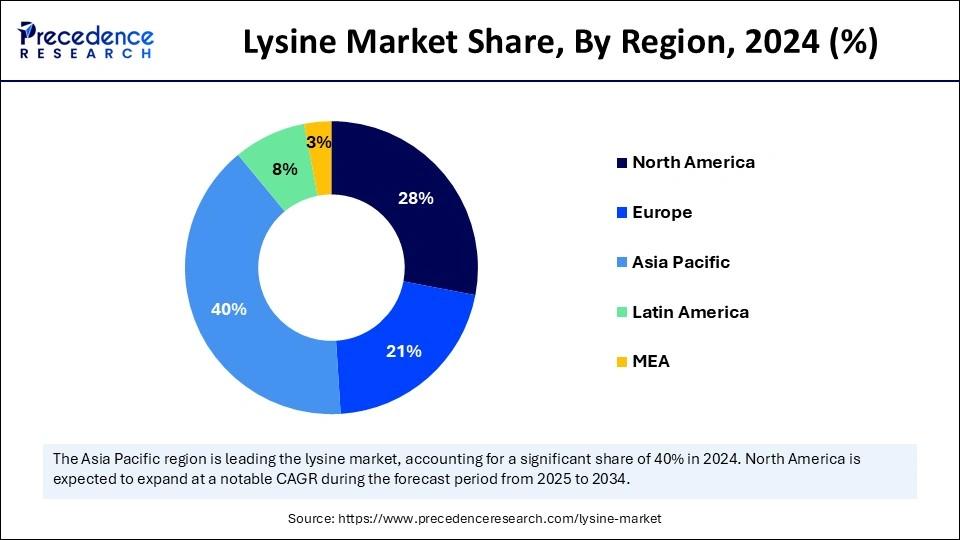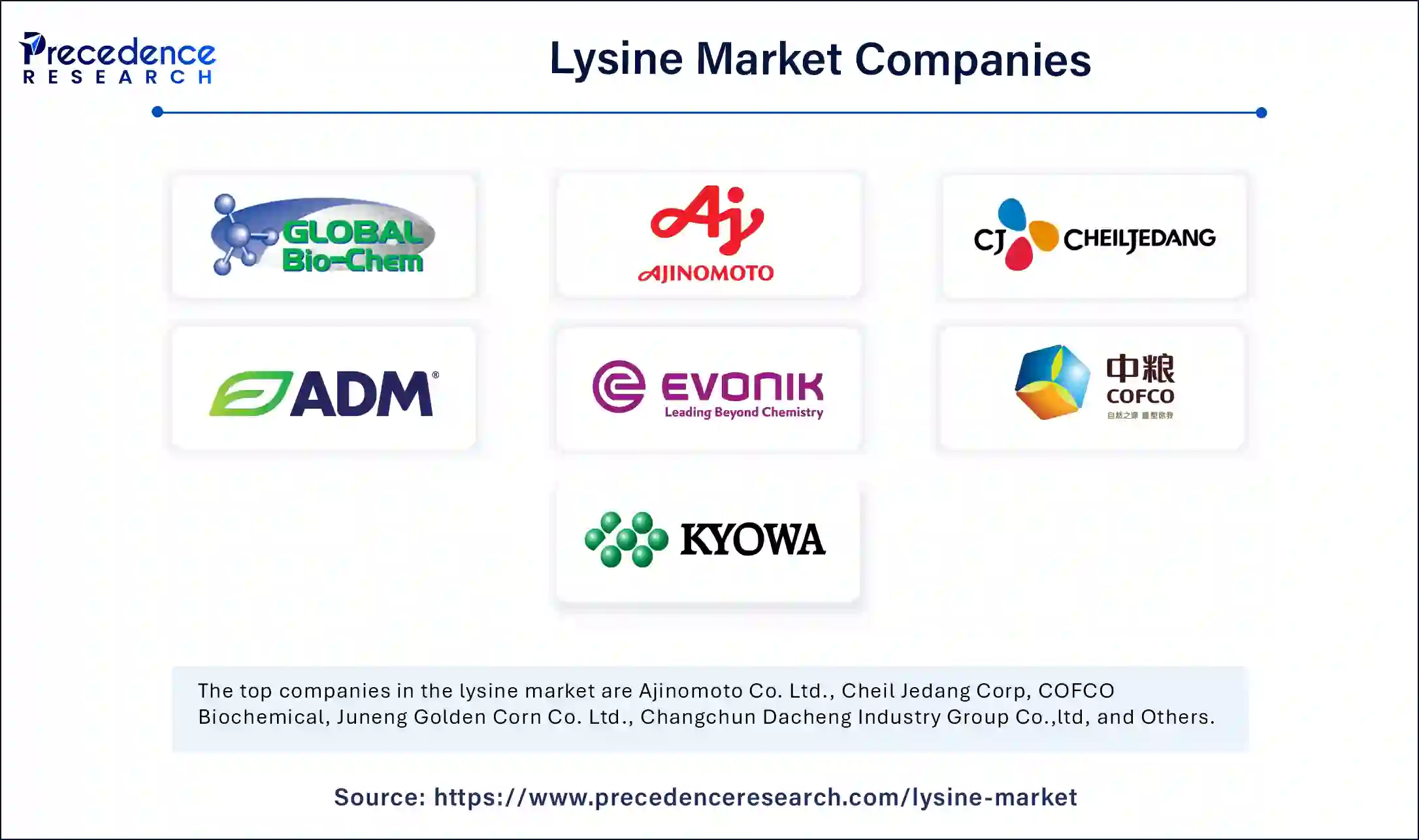The global lysine market size accounted for USD 1.40 billion in 2024 and is predicted to increase from USD 1.51 billion in 2025 to approximately USD 3.08 billion by 2034, expanding at a CAGR of 8.23% from 2025 to 2034. Increasing demand for protein-rich diets is the key factor driving market growth. Also, the rising awareness regarding the benefits of lysine coupled with the technological advancements in lysine production can fuel market growth further.

The integration of artificial intelligence in amino acid nutritional supplements is substantially impacting marketing strategies, product development, and consumer engagement. AI-powered data analytics in the lysine market are being used to process consumer trends and preferences, allowing manufacturers to make their product offerings efficiently. Furthermore, AI in the production process improves production effectivity, decreases overall operational costs, and maintains constant product quality, fulfilling the global market demand.
The Asia Pacific lysine market size was exhibited at USD 560 million in 2024 and is projected to be worth around USD 1.25 billion by 2034, growing at a CAGR of 8.36% from 2025 to 2034.

Asia Pacific dominated the lysine market in 2024. The dominance of the region can be attributed to the increasing demand for ready-to-eat foods and rapidly shifting urban lifestyle trends. In Asia Pacific, China led the market owing to the increasing disposable income and surging population growth in the country. Also, the nation's escalating pharmaceutical industry is optimizing the demand for lysine to produce many supplements and drugs.

North America is expected to grow at a significant pace in the lysine market over the studied period. The growth of the region can be credited to the presence of a strong pharmaceutical infrastructure coupled with the growing health consciousness among the majority of the population in the region. In North America, the U.S. led the market due to rising demand for dairy and meat products. Furthermore, the consumers in the region increasingly seek lysine-rich diets because of their various health benefits.
Lysine is an α-amino acid, acting as a key component of proteins. It is slightly different from acid. It contains one amino group, a carboxylic acid group, and another amino group that is positively charged. Natural sources such as lean beef, cheese, shellfish, nuts, chicken, pig, soy, lentils, legumes, and beans contain plenty of lysine. Lysine is essential for calcium absorption and collagen formation in the body. Lysine hydrochloride is produced on a huge scale by the fermentation process of sugar.
| Report Coverage | Details |
| Market Size by 2034 | USD 3.08 Billion |
| Market Size in 2025 | USD 1.51 Billion |
| Market Size in 2024 | USD 1.40 Billion |
| Market Growth Rate from 2025 to 2034 | CAGR of 8.23% |
| Dominated Region | Asia Pacific |
| Fastest Growing Market | North America |
| Base Year | 2024 |
| Forecast Period | 2025 to 2034 |
| Segments Covered | Form Powder, Application, and Regions |
| Regions Covered | North America, Europe, Asia-Pacific, Latin America and Middle East & Africa |
Surge in risk factors associated with protein deficiency
The increasing incidence of many health issues related to protein deficiency is the major factor driving the lysine market. Consumers globally are increasingly becoming aware of their healthy dietary habits. In addition, a protein deficiency can cause conditions like Kwashiorkor and Marasmus. There is a big risk of extreme emaciation and a long-term negative energy balance, which can lead to muscle wasting and fat exhaustion, negatively impacting many people's health.
Stringent regulatory requirements
Lysine market players have to face challenging and costly businesses to fulfill the strict regulatory demand and secure permits, which sometimes pose a hurdle for the companies who opt to launch new lysine products. Moreover, changing consumer tastes, such as moving toward natural and plant-based diets, may have a negative impact on market growth. This sudden shift might affect the livestock sector, which will then impact the amount of lysine required in animal feed.
Growth of poultry and livestock industries
Increasing urbanization, incomes, and shifting dietary habits fuel substantial opportunities in the global lysine market. China is the biggest producer and consumer of poultry and pork products. The government's efforts to industrialize and modernize the agricultural field have resulted in substantial advancements in poultry production facilities. Furthermore, nations such as Brazil and Mexico have recently seen substantial growth in South America's poultry and livestock sectors. This growth in the emerging regional market can impact market growth positively.
The L-lysine hydrochloride (HCL) segment held the largest share of 42.30% in the 2024 lysine market. The l-lysine hydrochloride, a salt formation of merge important main amino acid l-lysine with hydrochloric acid, is a common base formation of lysine in pharmaceutical and dietary applications. It's a highly adopted space in the gym sector for its solubility and stability to free lysine. It is also used in feed additives and animal nutrition. This lysine type is bolstering health development in the animal stock and human dietary system if considered appropriately.
The L-lysine sulphate segment is expected to grow at a CAGR of 6.90% during the forecast period. The is a compound formation by merging amino acid l-lysine with sulfuric acid. The development of l-lysine sulphate consists of synthesizing it via chemical synthesis or fermentation and then progressively improving its properties with additives similar to amaranth dye. This segment is steadily evolving with the protein-balancing (ingredients) demand in the protein supplement sector.
The feed grade segment held the largest share of 78.50% in the 2024 lysine market. The feed grade, especially l-lysine sulphate and l-lysine HCL, is an essential amino acid supplement mainly used in animal feed. The growth and development of animal feed have significantly improved the provision of healthy dietary options for animals in their grain-based diets. The production rate increases with the rising demand for the amino acid supplement, which eventually elevates the lysine industry's growth globally.
The pharmaceutical-grade segment is expected to grow at a CAGR of 7.50% during the forecast period. This segment’s lysine development aims to produce lysine that is qualitative and holds purified standards. It contributes to drug development and improves medications. Lysine in pharmaceutical grade helps to control quality measures and purify techniques to provide efficacy and safety in pharmaceutical applications. This segment is emerging with the increased prevalence of disease and contributes to immunotherapy.
The encapsulated segment is expected to grow at a CAGR of 6.80% during the forecast period. The encapsulation of lysine, mainly of l-lysine, is a technique used for absorption in the intestines. The encapsulation focuses on providing lysine to the lower digestive tract. This encapsulated formation elevates nutritional value. It is a secondary approach to the lysine market. The demand for nutritional food or protein supplements is rising among health health-conscious population, so the demand for this market is also accelerating.

By Type
By Grade
By Form
By Regions
For inquiries regarding discounts, bulk purchases, or customization requests, please contact us at sales@precedenceresearch.com
No cookie-cutter, only authentic analysis – take the 1st step to become a Precedence Research client